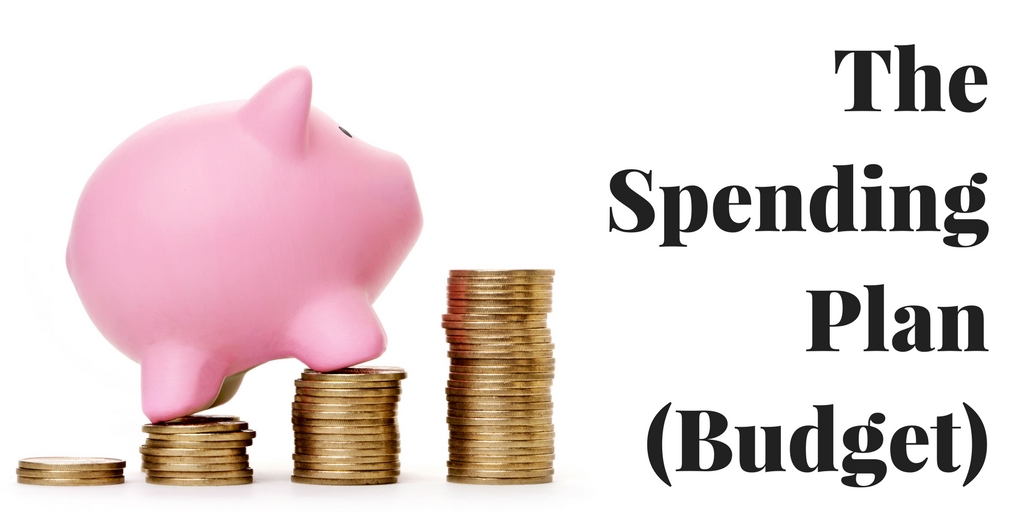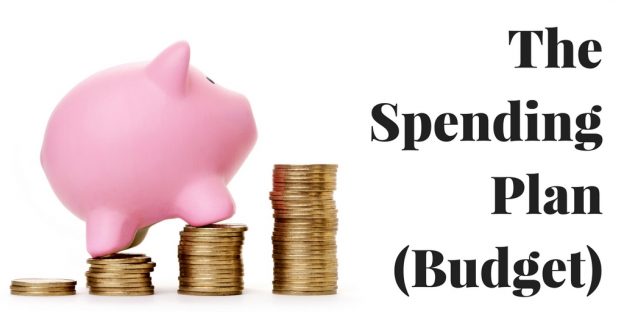
1. What is the spending plan?
Your spending plan is essentially your budget. By using a more positive name, you can escape the feeling of restriction that often accompanies the term budget.
Your spending plan is a tool to help you achieve financial goals that otherwise might seem impossible to reach.
It is a way to take charge of your spending on a daily, weekly, and monthly basis so that you can channel your income to achieve your goals.
A spending plan is also a way to keep money from slipping away unnoticed, allowing you to take charge of decisions such as what to buy, when to buy it, and why.
2. How do you create a spending plan?
The first step is to set your budget goals , both short and long term.
Goals give you something to look forward to and help you identify what you would eventually like to accomplish with your spending plan.
In addition to identifying your financial goals, you need to estimate their cost, factoring in the rate of inflation for long-term goals.
This allows you to determine how much must be set aside each month and helps you prioritize your goals .
Changes in your income, health, the economy, your family size, and dozens of other variables can affect your plan and force you to sacrifice some of your goals.
By prioritizing your goals, you will be prepared to make crucial decisions about what goals to abandon if necessary.
3. How do you develop a spending plan?
To develop a spending plan , you must first become aware of your monthly expenditures and income.
A spending diary, whether computerized or handwritten, will help you to identify your spending patterns and eliminate unnecessary expenditures.
Your expenditures analysis should include out-of-pattern expenses (expenses that are not incurred every month, such as annual insurance premiums, automobile registration fees, subscription renewals, and holiday expenditures).
Unless you derive income from various and unpredictable sources, your income analysis should be easier. Include your current salary or use estimates based on the past two years.
Once you know how much money you have coming in and where it is going, you can determine what percentage of your gross income goes to each category of expenditures (e.g., housing, taxes, transportation, food, clothing, entertainment).
If you have selected goals, such as paying off credit card balances or saving for retirement, then you can try to squeeze money out of one or more of your spending categories to fund the goal.
By keeping your plan flexible and periodically reevaluating your progress, you can take control of your financial situation.
4. How do you implement and monitor the plan?
Once your goals have been identified and your spending plan developed, all you need to do is implement the plan and monitor your progress .
To make the process easier, you should include the whole family in the effort, commence the plan at a good time (not just before the holidays or vacation), keep the monitoring process simple, and be flexible.
Discipline is necessary, but don’t be too hard on yourself or you may become frustrated and abandon the whole effort.
Be willing to make adjustments as you go along. You can monitor your plan using modern computer software or old-fashioned paper and pencil.
5. How do you cut costs if you are spending too much?
► If you are spending too much , there are several ways to cut back. One approach is to work on changing your spending habits.
Suppose you are spending too much money on particular items (such as clothing) or spending more money at certain times of the month (near payday).
By being aware of those habits, you can make appropriate changes. You may also try shopping smarter and reducing restaurant and/or entertainment expenses.
► Another option is to downsize to a less expensive car or home to reduce spending.
You may also reduce spending by reducing the cost of your debt . One way is to consolidate or refinance high-interest loans.
As mentioned, you shouldn’t be too hard on yourself, but make a few changes. In time, you may be able to bring your spending under control.
6. How do you increase your cash flow?
To maintain your spending plan, you must always have sufficient cash flow. There are a number of ways to increase your cash flow if you need to.
You might ask for a raise, take a higher-paying job, take a second job, or turn a hobby into a business.
You can sell or liquidate assets and eliminate expenses. You can also borrow your way through a cash flow crisis, provided you can afford the additional loan payments when they come due.
7. Can you afford to have one spouse stay at home?
If you are developing your spending plan to determine whether a spouse can remain at home , then you have additional factors to consider.
You should examine the short-term impact that losing an income will have on you and your family (immediate loss of cash flow) as well as the long-term impact (only one income contributing to the retirement fund, for example).
Remember that when one spouse stays home, you may actually reduce some spending categories, such as child-care costs and commuting costs.
It is always good to do a second income analysis to determine the after-tax benefits of having both spouses working, and be prepared to accept lifestyle changes if you decide to have one spouse stay home.
Implementing and Monitoring Your Spending Plan
8. How do you implement your spending plan?
Once you have identified your budget goals and created a spending plan to meet them, you are ready to put your plan into action.Before you begin, though, here are some tips to avoid common mistakes.
- Involve the entire family. Implementing and monitoring your budget plan requires commitment as well as discipline from the entire family. Make sure that they are all in agreement and understand your plan. The better you all work as a team, the greater the chances for success.
- Remember that discipline does it. As with a diet, to get long-term benefits, your budget should become a way of life. Jot down all the expenses, item by item, day by day, in your diary. If you are using your computer, make sure you enter all the expenses at the end of the day or at the end of the week. Don’t wait until the end of the month because, by then, you will have so many entries that you are likely to give up.
- Timing is everything. Start at a time when it is easy for you to follow and stay with a plan. For example, do not start a new budget just before holidays or your anniversary. Start at the beginning of the month, or, if possible, the beginning of the year.
- Easier is better. Keep monitoring simple. Divide your expenses into fixed, variable, and discretionary categories. Monitor your variable and discretionary expenses, such as clothing money or eating out, once you have assigned your fixed expenses.
- Use different credit cards. Track different categories by using different credit cards. Dedicate one credit card for groceries so that you don’t need to write down your expenses every time you buy any groceries. Instead, your credit card statements will itemize your grocery expenses for you. Use an oil company card when you fill up your car’s gas tank.
Caution: If you’re going to use multiple credit cards to help track your expenses, make sure that you aren’t paying high annual fees for each of these cards.
Caution: Be careful not to fall into the trap of using credit to pay for everyday expenses and not paying off your outstanding balance each month. If you do this, it will seem like you are spending less, but your debt will continue to increase.
- Find a system that works for you. Whatever works for you is good so develop a system that meets your lifestyle.
- Fine tune as you go. Keep in mind that implementing a spending plan requires fine tuning of your estimates and your expenses as you go along. You will get better as time progresses. Don’t give up too quickly if you feel it is not working.
9. How do you track your progress?
- Using a personal computer to monitor your spending plan–If you are using your personal computer and a money management program to monitor your spending plan, make sure that you feel comfortable using both before you start your plan. Enter all your data in the program and make sure that you assign proper categories for each expense.
Make sure that you enter the amount that you have allowed to be spent under each category and keep a record of each expense as you go along.
The benefit of using a computer is that it will track all the categories automatically. It can give you a report if you are overspending or underspending in each category.
- Manual monitoring of your spending plan–If you prefer to monitor your spending plan on a piece of paper, you can do that too. Just record every expense that you incur, just as you were doing while keeping your spending diary. It is crucial that you enter every expense according to the category.
Keep a running total of each category as you go. For instance, if your spending plan is monthly, total each category every week to get a clear picture of how you should adjust your expenses.
If you create a system that is easy to follow, you are more likely to
stay with it for a longer period of time.
As you gain more experience monitoring your spending plan, you will almost surely develop methods to make it simpler.
After a few months, you may choose to lump some categories together because you realize that you are able to estimate expenditures more easily.


